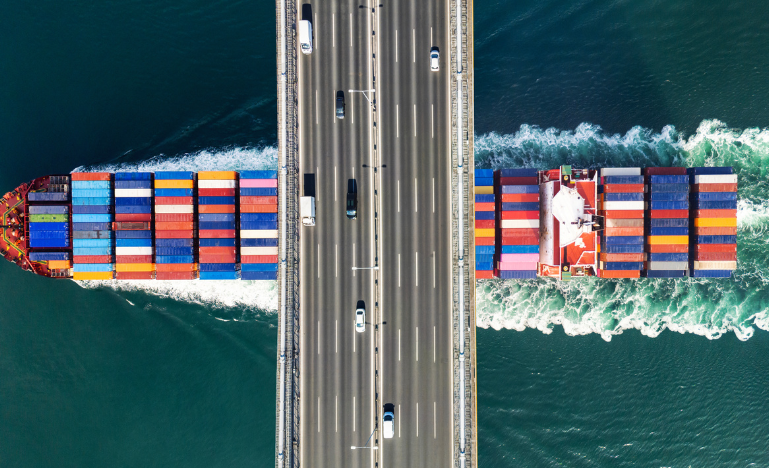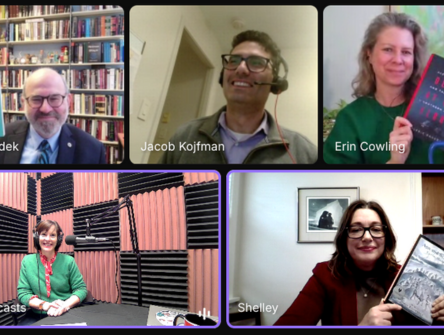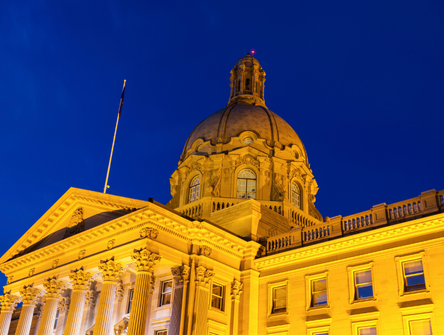Pushing for trade with more predictable partners
Canadian policymakers haven’t shared plans on deepening ties with the EU, but it will likely be a topic of side conversations as G7 members gather in Alberta

After getting punched in the face by its top trading partner, it’s no surprise that Canada is eager to deepen ties with more predictable friends, particularly the European Union.
The question is how. Given that Canada already has a comprehensive free trade agreement with the 27-member bloc, what more can this country do? So far, policymakers have not spelled this out in detail, though closer cooperation will likely be a topic of side conversations when G7 members meet in Alberta for their summit this month.
In the short term, observers say the federal government should encourage more matchmaking between Canadian and European companies, particularly small and medium-sized firms unfamiliar with each other’s markets. It should also harmonize product laws where possible.
However, in the long term, policymakers here may need to revisit legal and policy frameworks, particularly in the agriculture, artificial intelligence, and natural resources sectors where Canada aims to be a world leader. From food policy to Indigenous land rights, privacy and AI legislation, Canada should look at where changes need to be pushed through, given our new world order, some say.
“We need to align more with EU regulations,” says Erick Duchesne, a professor at Université Laval, specializing in international trade negotiations.
“We have to make some adjustments and be more flexible. If we do, there will be some major rewards.”
Strengthening relations with Europe has broad popular support in Canada. In the wake of a (half) joking article arguing that the country should join the EU, a poll revealed that nearly half of Canadians agreed.
Tricky territory
However, pivoting without incurring the wrath of the U.S., which currently accounts for more than 80 percent of Canada’s exports, will be tricky. Canada’s economy — and many of its policy frameworks — have been more or less designed with our unexpectedly aggressive southern neighbour in mind. While the EU is home to more than 500 million people and is the world’s largest single market, it still only accounts for less than 10 percent of Canada’s trade in goods.
Many say having the largest and most influential economy as your neighbour has made it possible for Canada to kick inconvenient issues into the long grass and not develop a coherent industrial policy.
But this is no longer possible.
“We have been extremely complacent,” says Jacques Shore, a partner at Gowling WLG and former chair of its national government affairs practice, of Canada’s reliance on the US.
He says much more can be done to enact policies that aim to diversify trade, and he's “confident that the new Carney government will focus on such initiatives.”
Getting CETA fully in force
So, how can Canada get cozier with friends across the Atlantic? Most agree that officials should apply diplomatic pressure to help push through the final ratification of the Comprehensive Economic and Trade Agreement (CETA), the free trade agreement with the EU signed in 2017. Currently in force provisionally, the trade pact has eliminated nearly all tariffs in many areas. This has helped boost the overall trade of goods and increased the number of Canadian firms trading with the EU.
However, many EU countries, including France, Italy, and Poland, are resisting signing off.
While this has little day-to-day implications, as the bloc makes decisions for the entire region, getting over that final hurdle is important to remove uncertainty.
“As long as the agreement is only being applied provisionally, any EU member state that decides that it will not ratify CETA can throw the future of the entire agreement into uncharted legal territory,” says Achim Hurrelmann, a professor of political science and co-director of the Centre for European Studies at Carleton University.
How much Canada can actually influence this process is unclear. While objecting countries have different concerns, disagreements over the safety of food products remain some of the more difficult stumbling blocks to final ratification. European citizens heartily support the bans on agricultural practices that are common and well-accepted in Canada and the US, including the use of certain genetically modified organisms (GMOs), hormones, pesticides and herbicides.
“The dispute over growth promoters and meat goes back over three decades, and there is no likelihood of much compromise,” says Elizabeth Smythe, professor of political science (emerita) at Concordia University College of Alberta in Edmonton.
For their part, Canadian farmers will likely not abandon their methods, particularly as the U.S. accounts for two-thirds of all agri-food exports.
Some say that beyond CETA, part of what’s holding back the sector is the lack of a unified agricultural policy that makes sense of the country’s sustainability, export, health, and food security goals in a rapidly changing climate.
Government objectives are often in direct opposition. For the last decade, the Department of Agriculture and Agribusiness has pushed for greater exports. At the same time, the Trudeau government, beginning in 2015, mandated the departments of Health and Environment to examine aspects of food, health and sustainability.
“The government needs to do better,” says Smythe.
Better raw minerals regulations
But agriculture isn’t the only sector that requires scrutiny. The mining industry also needs coordinated action, particularly when it comes to Indigenous land rights. Some say Canada’s legal frameworks are hindering the sector’s potential expansion. This is partly because of disagreements over land ownership, which are lengthening—sometimes by decades—the process to gain mining permissions and permits.
“We will likely need to come up with novel solutions to balancing the obligations and interests of project proponents, local communities and governments to expedite these processes,” lawyers at Osler said in a recent update.
When it comes to permitting, “Canada needs to get its house in order,” says Mark Camilleri, a lawyer and CEO of the Canada EU Trade and Investment Association.
“To the extent that Canadian regulation has hindered the development of these projects, then Canadian regulation will have to change or be updated to facilitate projects.”
Metals like nickel, lithium and cobalt, the building blocks of both the digital economy and the renewable-energy transition, are major Canadian exports, and the EU has made it clear it wants more.
Canada is uniquely positioned to take advantage of the explosive growth in demand for semiconductors, batteries, solar panels, and a whole host of essential products for modern life that require metals and minerals. Not only does Canada have ample natural reserves, but its reputation as a sustainable source ticks many boxes for investors and governments alike.
As Prime Minister Mark Carney has often said, “Canada has what the world wants.”
Many hope he will create a more mining—and business-friendly environment for natural resource firms, both foreign and local.
Since 2021, the EU and Canada have engaged in a strategic partnership on raw materials. Now that the EU has launched its "ReArm Europe Plan/Readiness 2030" to scale up defence capabilities quickly in the face of the threat posed by Russia, the bloc is ripe for more deals with Canada, given its lack of many critical metals.
However, Canada’s abundant metals and minerals are almost entirely located on Indigenous lands. Various stakeholders are unable to agree or clarify rights and land titles: who owns what, where, and under what rules or treaties?
Many agreements have already been struck, creating successful partnerships, and mining firms understand that no project is viable without local buy-in. But many uncertainties remain, so projects are delayed as various stakeholders argue their positions, often in courts. In particular, it is unclear what counts as "meaningful consultation,” to what extent projects can be vetoed or under what circumstances terms can be negotiated.
“Indigenous participation is clearly the way forward,” says Camilleri.
“Europe wants to do more with Canada, but Canada needs to show the world it can build projects and take them over the line.”


